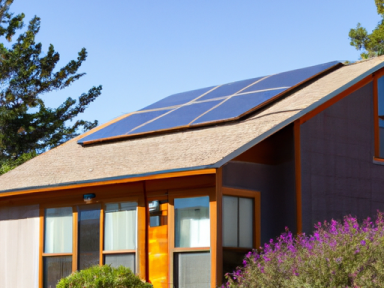Climate Change Catastrophe: Are You Prepared?
Understanding the Worst-Case Scenarios
With each passing year, the effects of climate change become more evident and alarming. Rising global temperatures, extreme weather events, and the loss of biodiversity are just a few of the consequences we face. While there is still time to mitigate the impacts, it is crucial to be prepared for the worst-case scenarios. By taking proactive measures, you can ensure the safety and well-being of yourself and your loved ones. Let’s explore the potential catastrophes and practical tips for preparation.
1. Extreme Weather Events
As climate change progresses, we can expect an increase in extreme weather events such as hurricanes, wildfires, and floods. These natural disasters can devastate entire communities, leading to power outages, food shortages, and displacement. To prepare for such events, consider the following steps:
– **Create an emergency kit**: Stock up on essential supplies like non-perishable food, water, flashlights, batteries, and first aid items.
– **Develop an evacuation plan**: Identify safe locations and establish communication channels with your family members in case you need to leave your home.
– **Secure your property**: Reinforce your home against potential damage by installing storm shutters, reinforcing doors, and clearing surrounding vegetation.
2. Food and Water Scarcity
Climate change can severely impact agricultural productivity, leading to food and water shortages. To ensure you have enough resources to survive, take these precautions:
– **Start a garden**: Cultivate your own food sources by starting a garden. Learn about sustainable farming techniques and focus on growing crops that thrive in your region.
– **Collect and purify water**: Install rain barrels to collect rainwater and invest in a water filtration system to purify water from natural sources.
– **Store long-lasting food**: Stock up on canned goods, dried foods, and other non-perishable items that have a long shelf life.
3. Health Risks
Climate change can exacerbate health risks, including the spread of diseases and heat-related illnesses. Protect yourself and your family by taking these precautions:
– **Stay informed**: Stay updated on local health advisories and take necessary precautions to avoid exposure to vector-borne diseases or extreme heat conditions.
– **Maintain a healthy lifestyle**: Exercise regularly, eat a balanced diet, and prioritize mental well-being to strengthen your immune system and overall resilience.
– **Prepare a first aid kit**: Have a fully stocked first aid kit on hand, including necessary medications and supplies to treat common ailments and injuries.
4. Energy and Infrastructure Disruptions
As the effects of climate change intensify, we may experience disruptions in energy supply and infrastructure. To minimize the impact on your daily life, consider the following steps:
– **Invest in renewable energy**: Explore options to generate your own electricity through solar panels, wind turbines, or micro-hydro systems.
– **Establish alternative communication methods**: In the event of power outages, have alternative means of communication such as two-way radios or satellite phones.
– **Learn basic repair skills**: Acquire knowledge of basic repairs for essential systems like plumbing, electrical, and structural components.
Conclusion
While the worst-case scenarios of climate change are daunting, being prepared is essential. By taking action now, you can safeguard yourself and your loved ones against the potential catastrophes these changes may bring. Remember, it is better to be overprepared than caught off guard. So, take the necessary steps today and embrace self-reliance to face the uncertain future with confidence.



GIPHY App Key not set. Please check settings